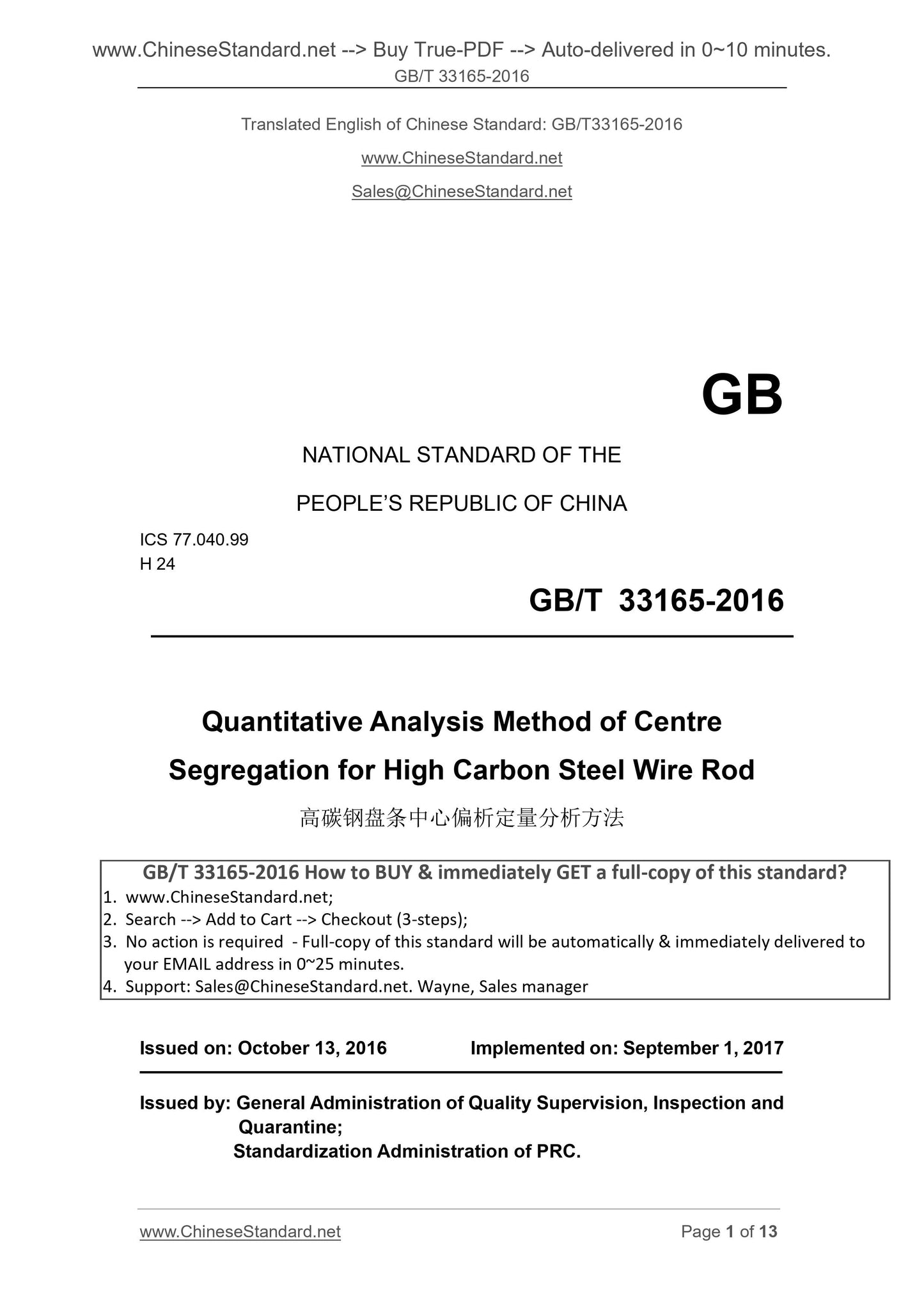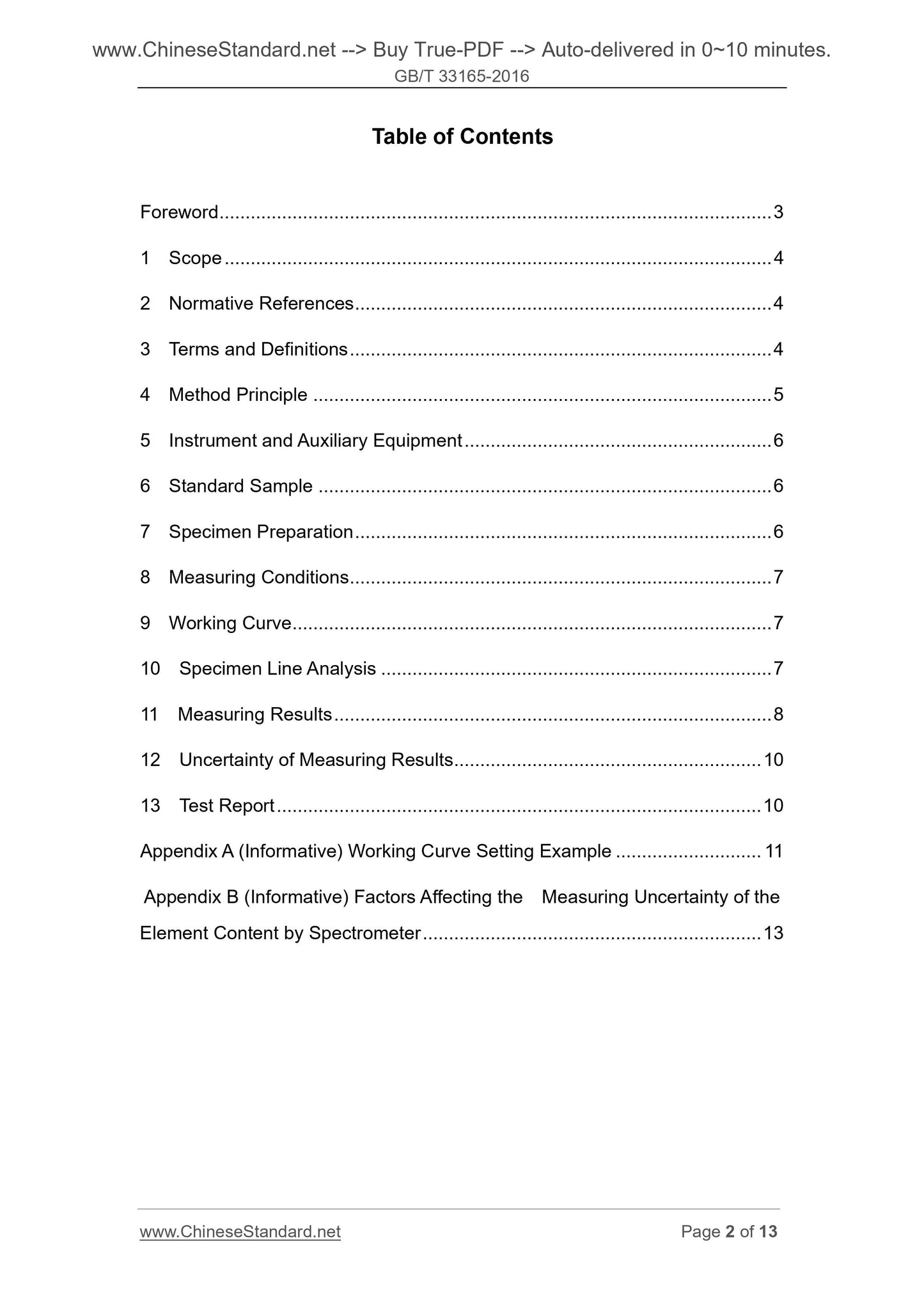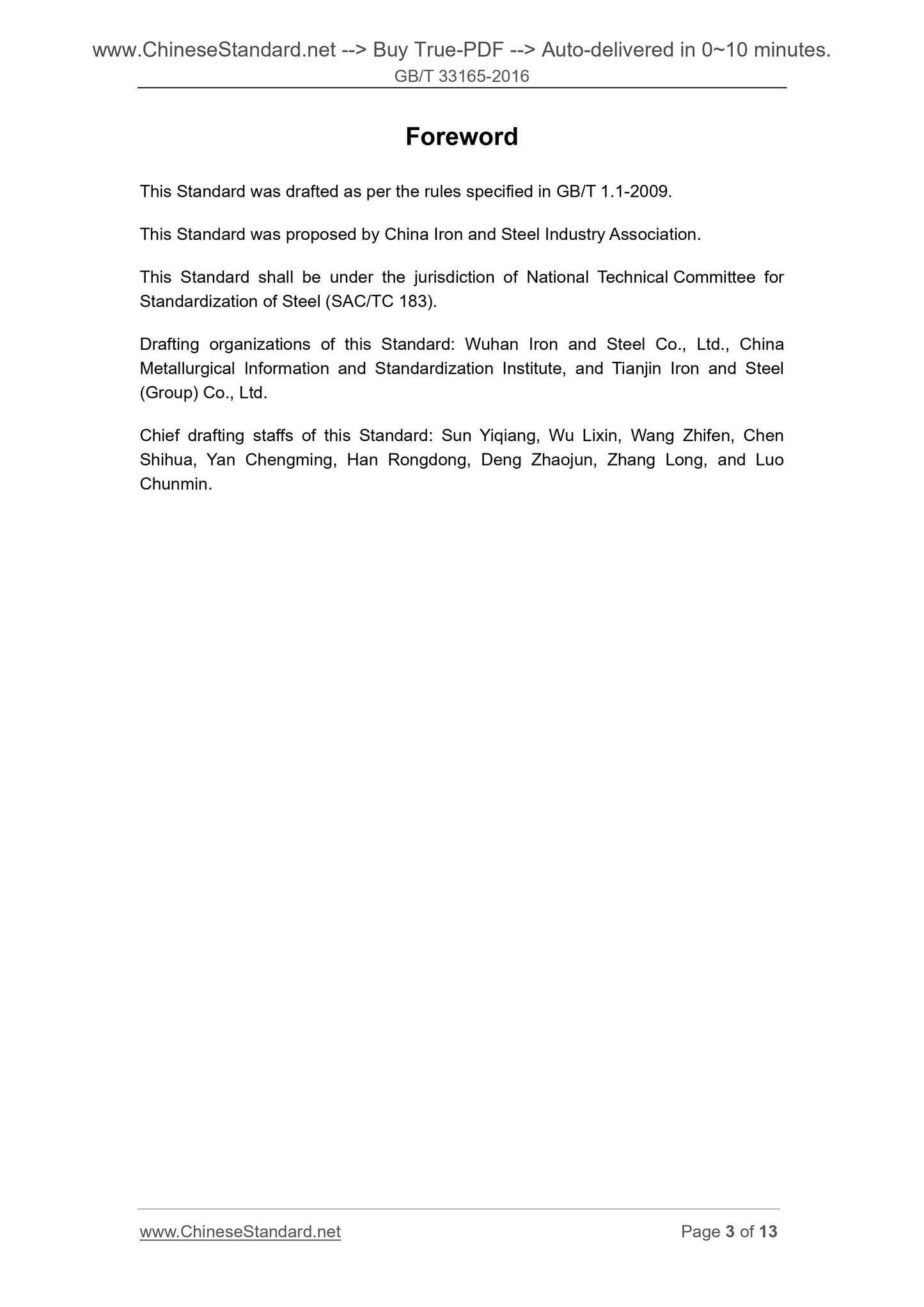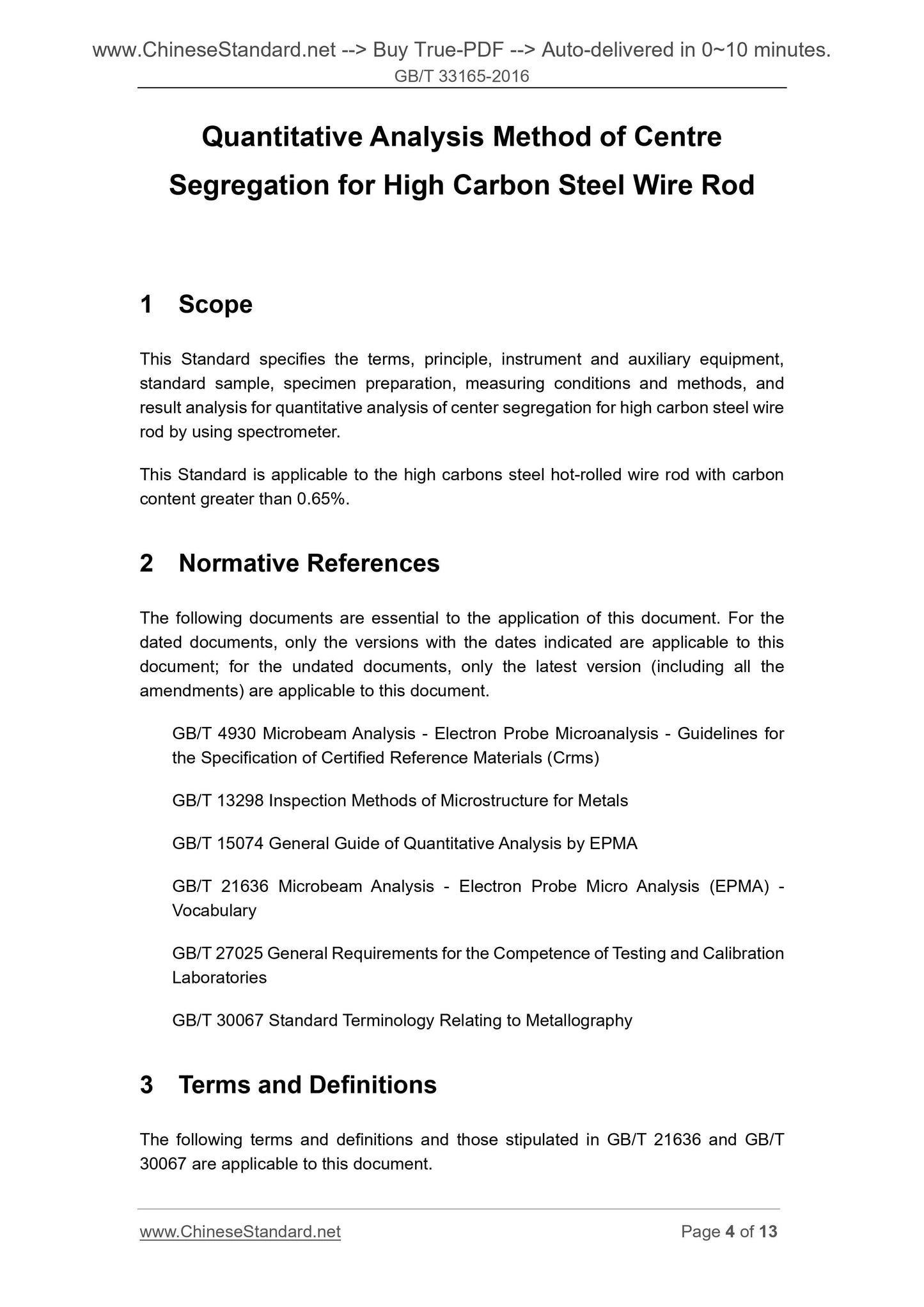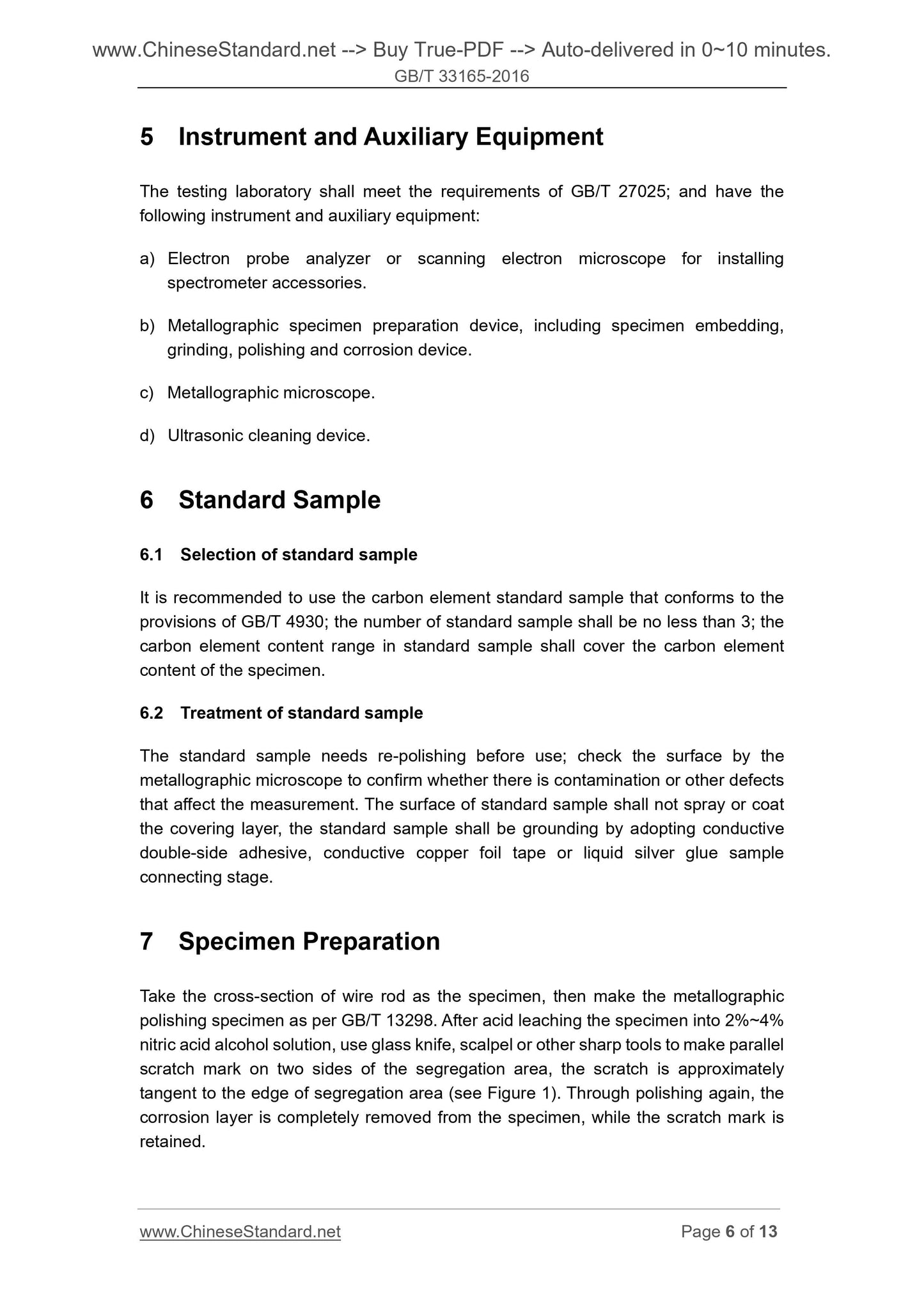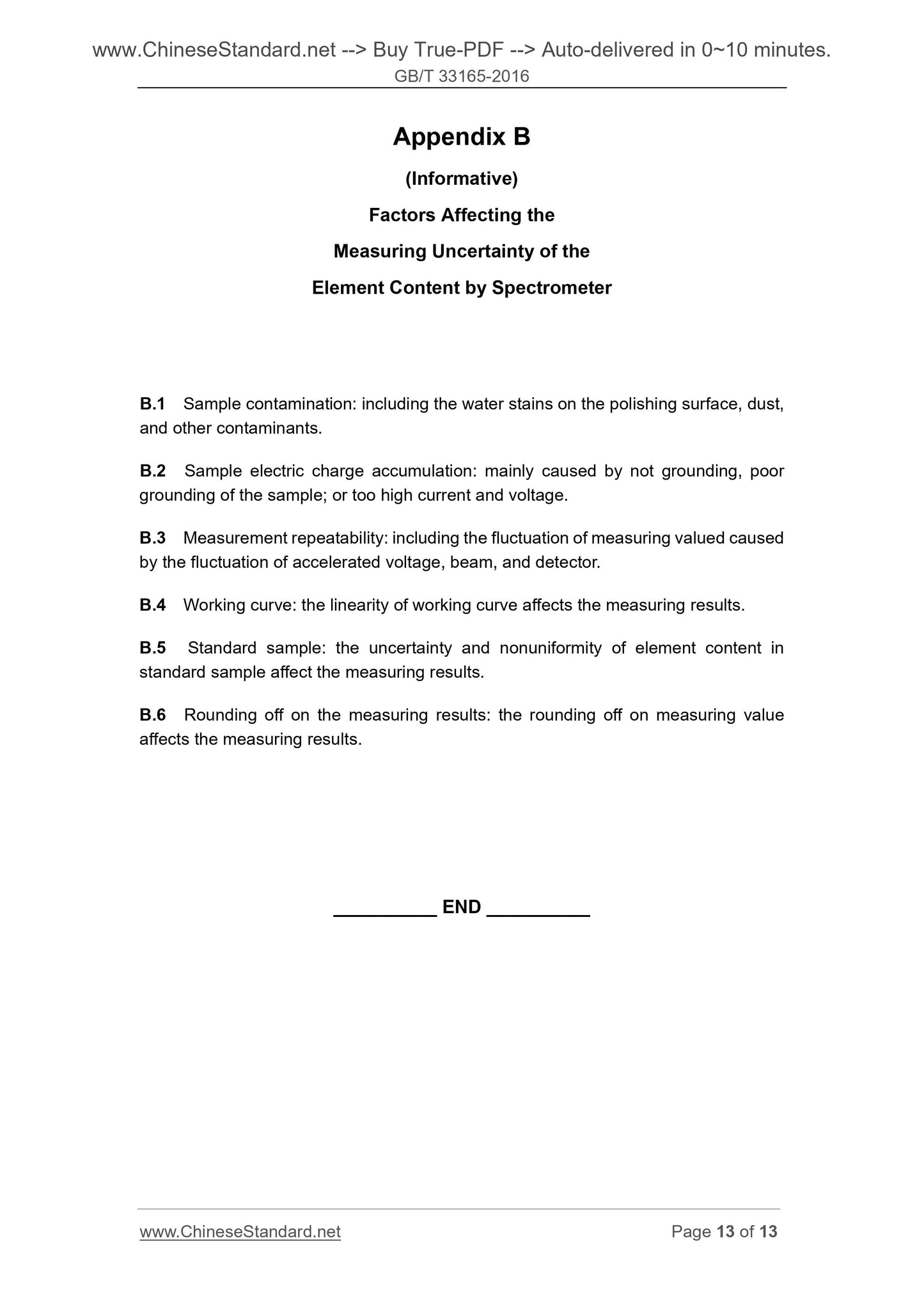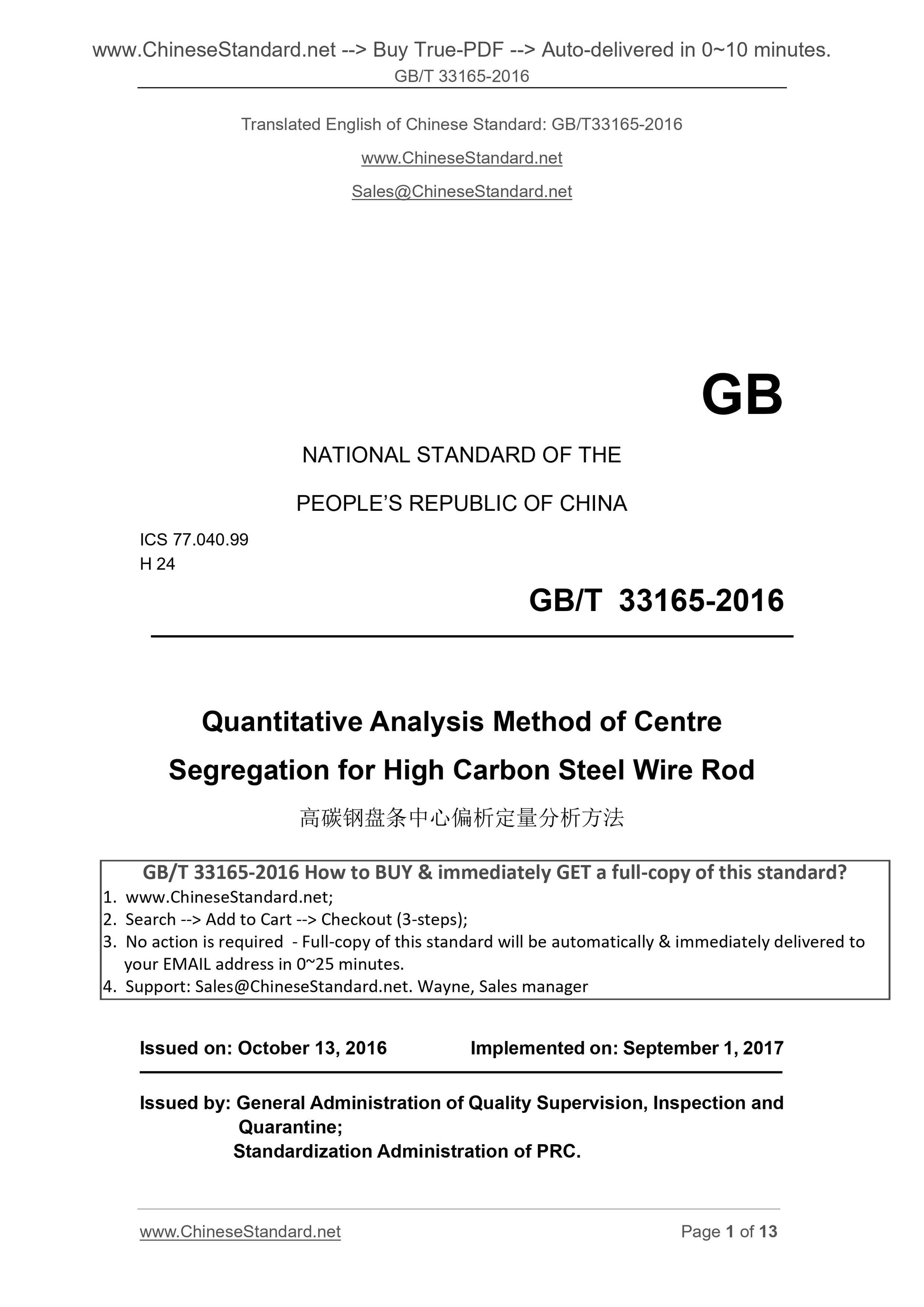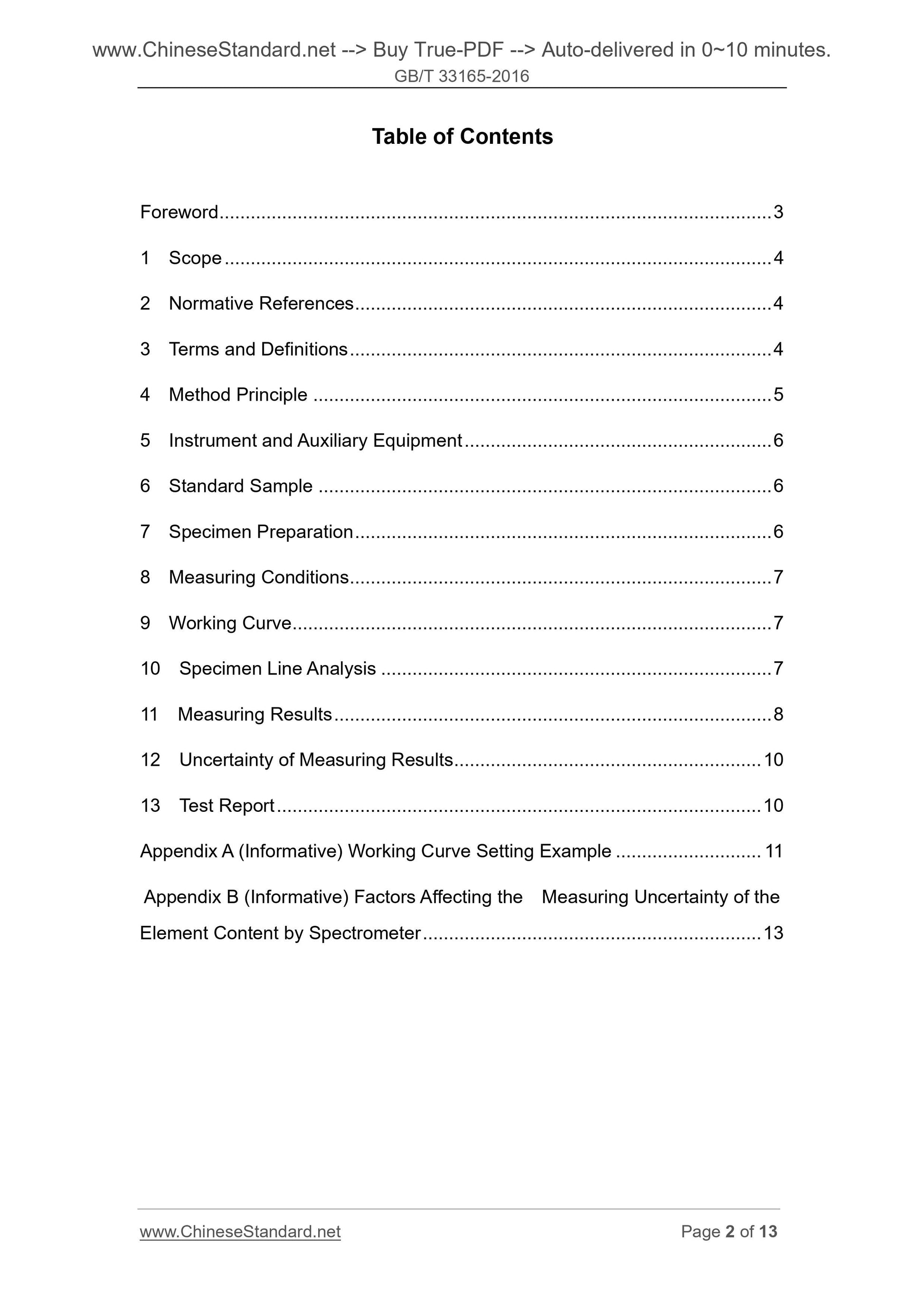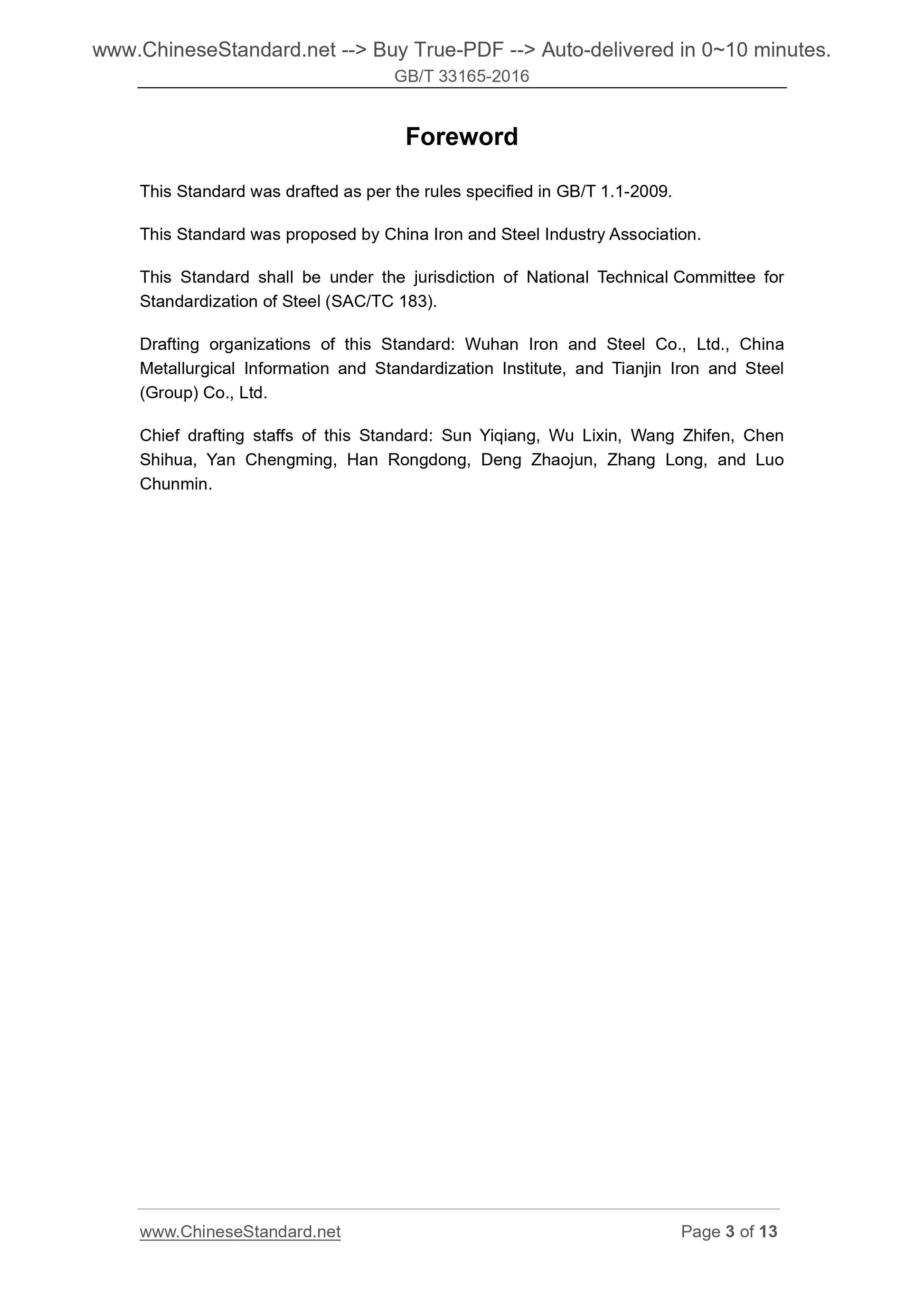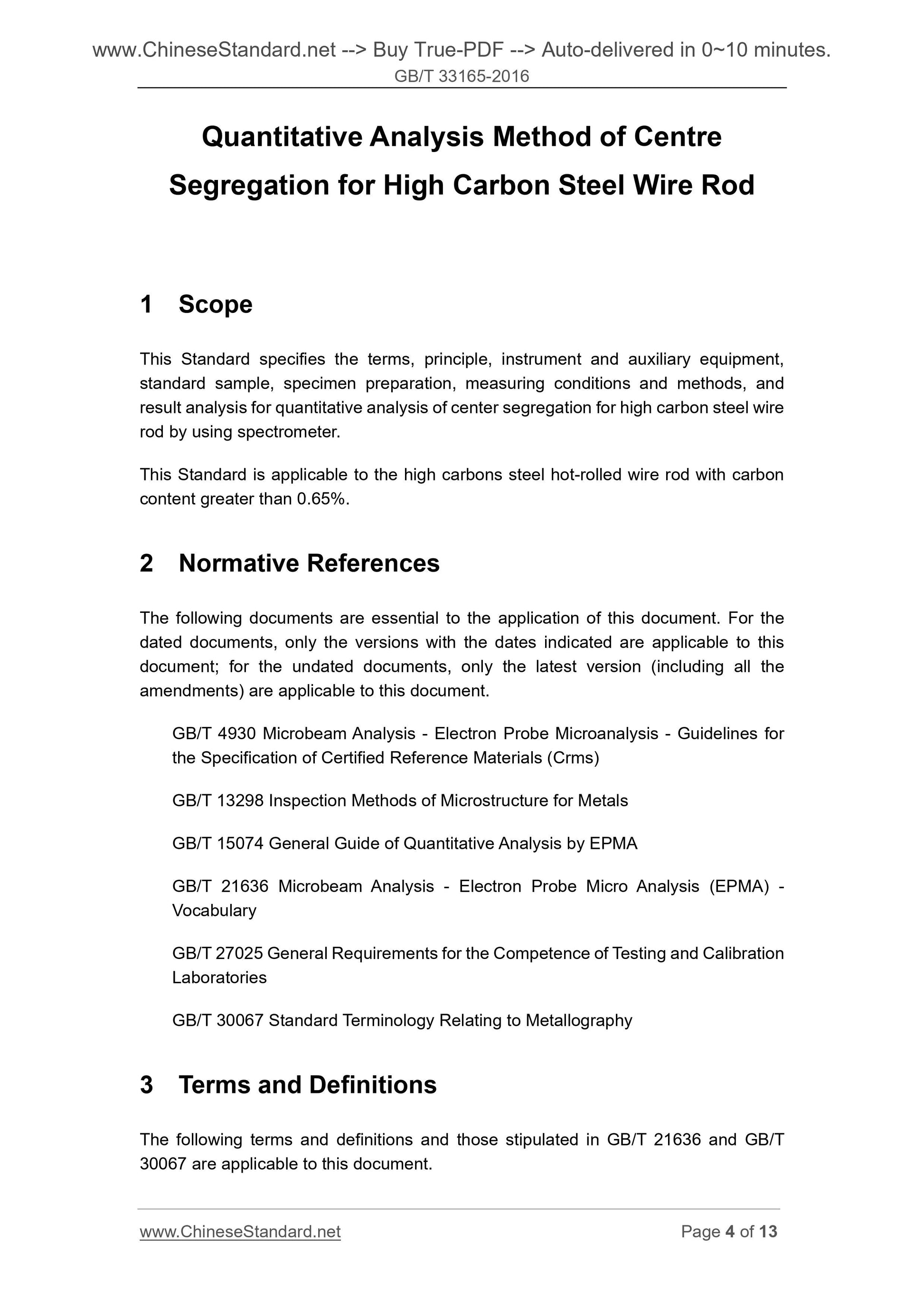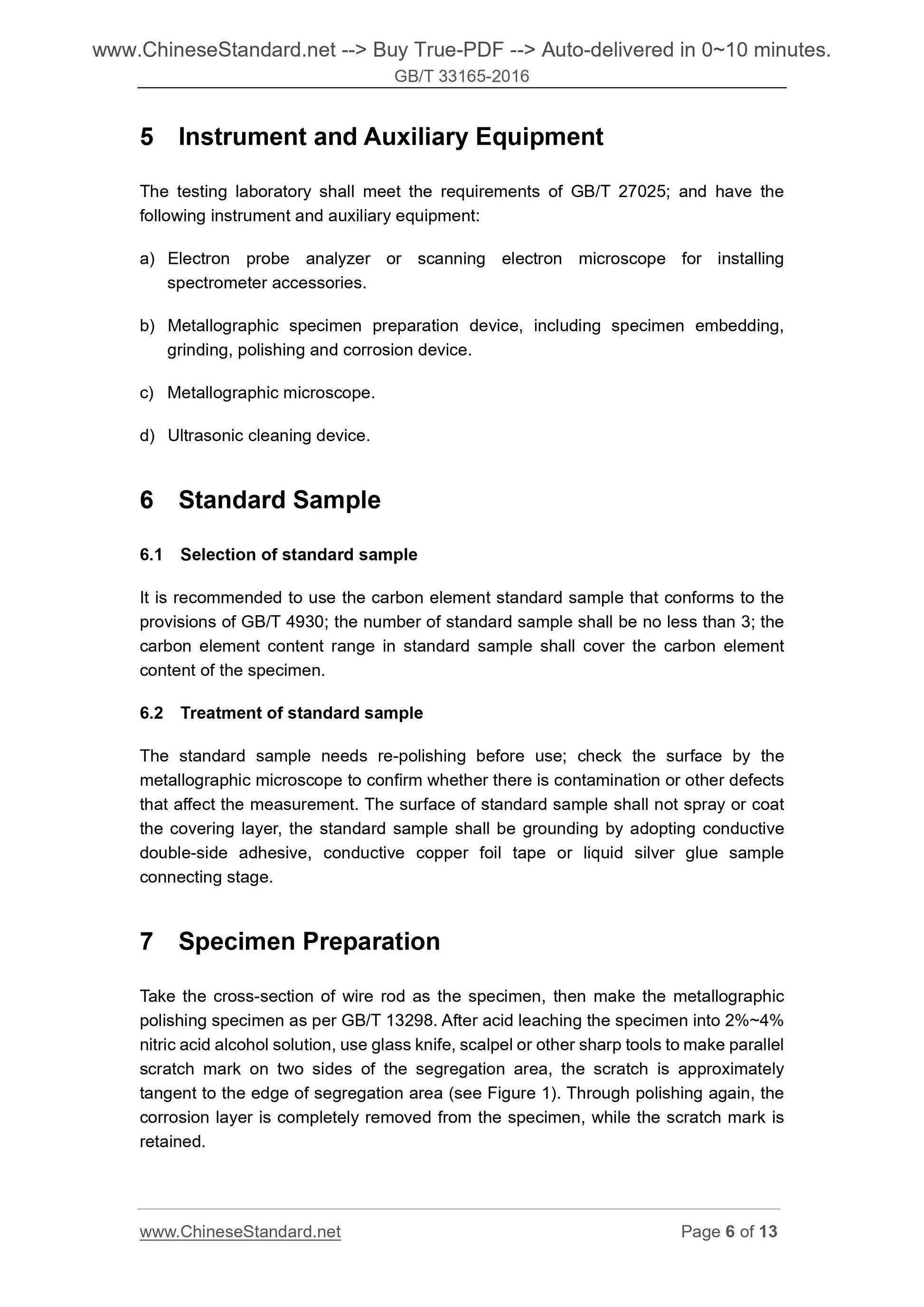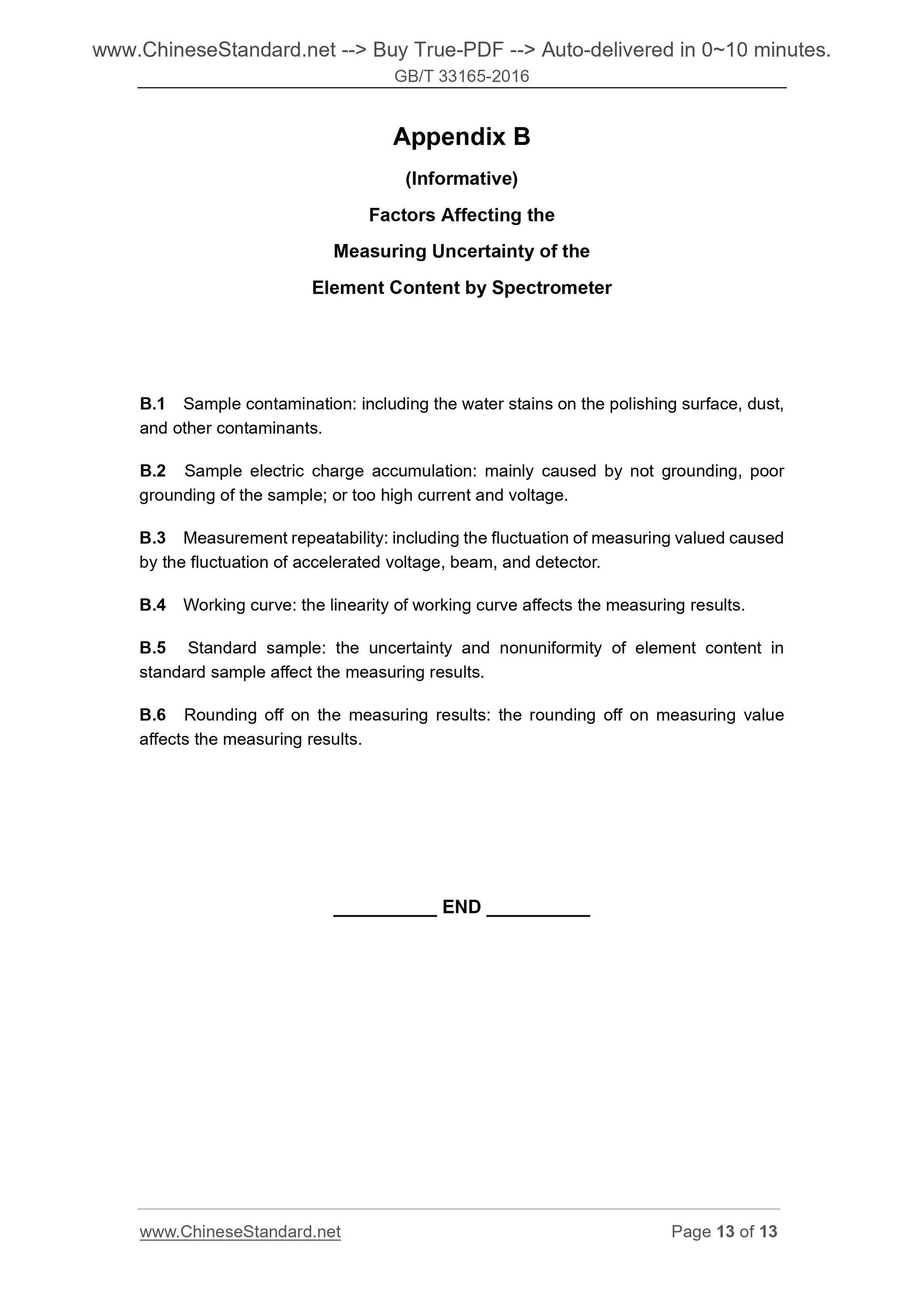1
/
of
6
www.ChineseStandard.us -- Field Test Asia Pte. Ltd.
GB/T 33165-2016 English PDF (GB/T33165-2016)
GB/T 33165-2016 English PDF (GB/T33165-2016)
Regular price
$90.00
Regular price
Sale price
$90.00
Unit price
/
per
Shipping calculated at checkout.
Couldn't load pickup availability
GB/T 33165-2016: Quantitative Analysis Method of Centre Segregation for High Carbon Steel Wire Rod
Delivery: 9 seconds. Download (and Email) true-PDF + Invoice.Get Quotation: Click GB/T 33165-2016 (Self-service in 1-minute)
Newer / historical versions: GB/T 33165-2016
Preview True-PDF
Scope
This Standard specifies the terms, principle, instrument and auxiliary equipment,standard sample, specimen preparation, measuring conditions and methods, and
result analysis for quantitative analysis of center segregation for high carbon steel wire
rod by using spectrometer.
This Standard is applicable to the high carbons steel hot-rolled wire rod with carbon
content greater than 0.65%.
Basic Data
| Standard ID | GB/T 33165-2016 (GB/T33165-2016) |
| Description (Translated English) | Quantitative Analysis Method of Centre Segregation for High Carbon Steel Wire Rod |
| Sector / Industry | National Standard (Recommended) |
| Classification of Chinese Standard | H24 |
| Classification of International Standard | 77.040.99 |
| Word Count Estimation | 10,122 |
| Date of Issue | 2016-10-13 |
| Date of Implementation | 2017-09-01 |
| Regulation (derived from) | National Standard Notice No.1716 of 2016 |
| Issuing agency(ies) | General Administration of Quality Supervision, Inspection and Quarantine of the People's Republic of China, Standardization Administration of the People's Republic of China |
Share
